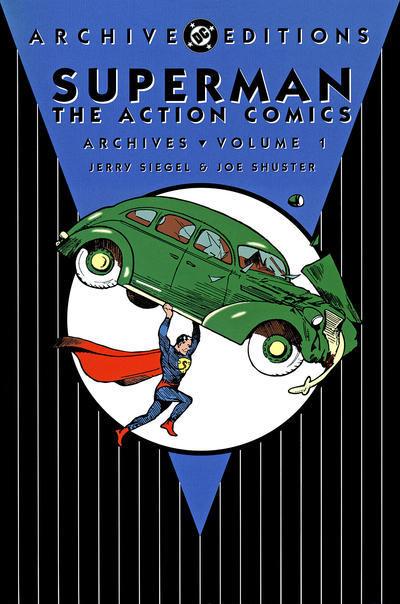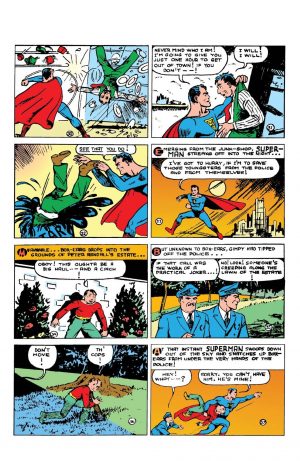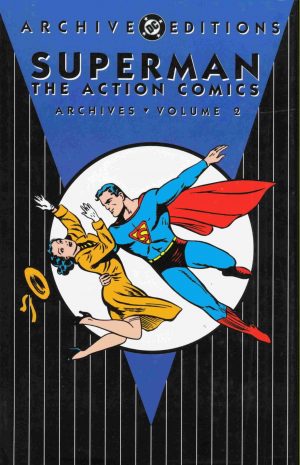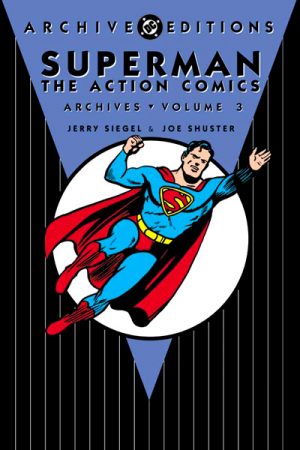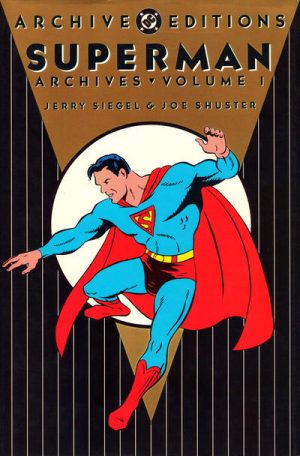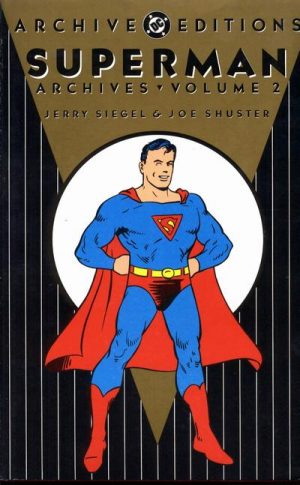Review by Frank Plowright
Scholars have identified the influences teenagers Jerry Siegel and Joe Shuster fed into their creation of Superman, but the result of combining those influences was the invention of the superhero. He might not have been the first costumed do-gooder, but Superman was the first with powers, although in this formative incarnation they’re not what we know today. He can leap buildings in a single bound, run faster than a speeding train and bounce bullets off his chest. That was fantastic enough in 1938.
This collection takes us from that 1938 introduction to January 1940, but without presenting every story. The given reason is that the Superman tales from Action Comics 2-6 were reprinted in the earliest issues of Superman, and by the time this volume appeared they’d been reprinted in the opening volume of Superman Archives ten years earlier. It’s a strange decision for an archival project, that means we’re supplied with fifteen of the earliest Superman stories, all running between eleven and thirteen pages.
Even discounting the lesser super powers, this is a very different Superman from the one we know today. Bigger problems occupy Superman now, but Siegel and Shuster’s version was a crusader for justice, prioritising ordinary people, and unconcerned about using his powers to intimidate or threaten the thugs. He sits in judgement, and as seen on the sample page, if he believes someone is preying on the weak, then Superman is happy to knock them around. The most shocking example is when a crook he’s carrying squirms around and tries to stab Superman mid-air, distracting him enough that he falls to his death. Superman’s epitaph is that he deserved it.
There’s a crude energy to the earliest stories, but Siegel develops into a better creator than Shuster, whose artistic skills are very limited. Even allowing for a learning process for an amateur artist Shuster’s skills never greatly progress, and a lack of nuance hampers the better stories. He’s at his best with larger illustrations of Superman letting loose.
Siegel, however, is a faster learner. A burning sense of social justice applies to his stories, and Superman deals with the social nuisances and street thugs Siegel surely wished he could deal with himself. He’s very influenced by the reality-based contemporary newspaper strips, and at his best supplies stories that push the same buttons. Superman dealing with someone swindling ordinary people out of money for shares in a worthless oil well is a tidy drama with several clever twists, and Siegel makes good use of Superman’s civilian identity being journalist Clark Kent. Kent uncovers injustice that Superman might otherwise miss, an example being a brutal prison warden, leading to some nice scenes of Superman in prison breaking rocks as he goes undercover. Before the end of the book Siegel’s also begun to expand Superman’s power set, showing both a primitive version of his later x-ray vision and his super breath.
It’s impossible to overstate the importance and influence of Superman when it comes to comics, superheroes and popular culture in general. However, despite the goodwill that generates, these first primitive stories are really only of interest to those who study comics and cultural historians. Time has moved on, and what thrilled in the late 1930s falls far short today. Still, Action Comics Archives Vol. 2 has Lex Luthor’s first appearance.
These stories have later been incorporated into other packages. They’re included in the oversized Golden Age Omnibus, and in the first Superman: The Golden Age thick paperback. An earlier and slimmer 21st century paperback publication has these stories spread over Superman Chronicles Volumes One and Two.
